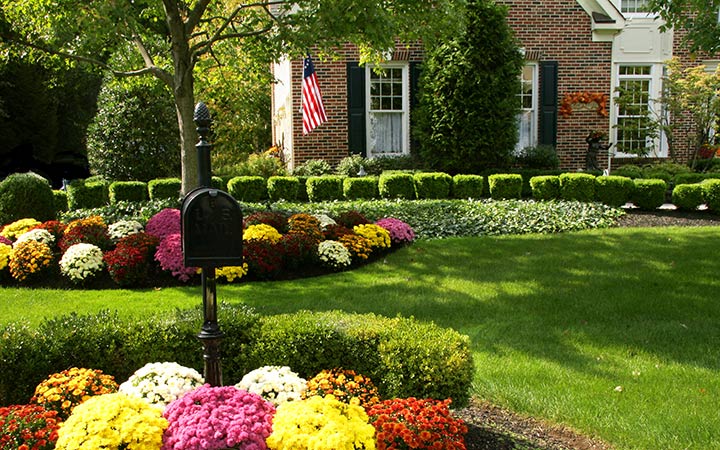Installing a new mailbox is a relatively simple and straightforward task. But there are a number of factors to take into consideration ahead of time.
The depth required for placing the post of a mailbox in the ground is generally two to three feet. This isn’t deep enough to worry about cutting into any buried electrical or utility lines, but sprinkler lines are placed at a much shallower level. If you—or your home’s previous owner—have installed a sprinkler system or outdoor lighting cables, check to make certain you won’t be damaging any of these when you place a new post or foundation for your mailbox.
Most posts are secured into the ground around a cement foundation. These can be extremely difficult to remove; in many instances, you will be better served by either utilizing the same post or cutting it off at ground level and placing the new post a short distance away, in fresh ground.
Remember as well that before you undertake the project, it’s important to review postal regulations to make sure that you are complying with the rules regarding mail delivery. Even the post supporting the box requires approval from the local post office. It must be accessible from your carrier’s vehicle so that the letter carrier does not have to leave his/her car in order to place the mail in the box.
Many homeowners like to create their own mailbox, designing something that complements their home and property. Again, the post office must approve your design. Something that looks charming but is difficult to open or creates some other challenge or hazard will turn your mailbox into nothing more than a piece of decoration that serves no practical purpose… other than perhaps becoming a bird house!
Both the post and your mailbox need to be constructed of durable material that will withstand changing weather conditions, traffic mishaps, and, sadly, the possibility of being vandalized.
Wood, of course, is the traditional choice for mailbox posts. Cedar and redwood are attractive choices and insect-resistant, but more expensive than other selections. Pressure-treated wood is perhaps the best option since it is both resistant to rot and to insects, though the section of post that sticks above ground should be treated with sealant to prevent cracking or splitting. Stone, brick and concrete bases are extremely weather-resistant, but must conform to local and state building codes, as well as postal regulations.
Putting a few inches of gravel in the bottom of the hole before installing the post will improve drainage and prevent standing water from collecting around the base. And be mindful as you set the post into the ground to keep it upright; having a level on hand is crucial to ensure that you won’t wind up with a mailbox that is forever positioned at a tilt.
Use galvanized or stainless steel screws when fixing the box directly to the stand. You may prefer to mount a board on the post and affix the box to this. It’s important that the board be mounted tightly to the post and the box tightly to the board.
Finally, while you do not have to have your name on the mailbox, you must put the street address number on it on the side facing the approaching mail carrier.
The entire process of installing a new mailbox or replacing an old one is pretty straightforward. But if you don’t have the time or inclination to undertake the project yourself, Fix It!® is more than happy to assist you with this and in any other home repair, remodel and restoration projects on your to-do list.



